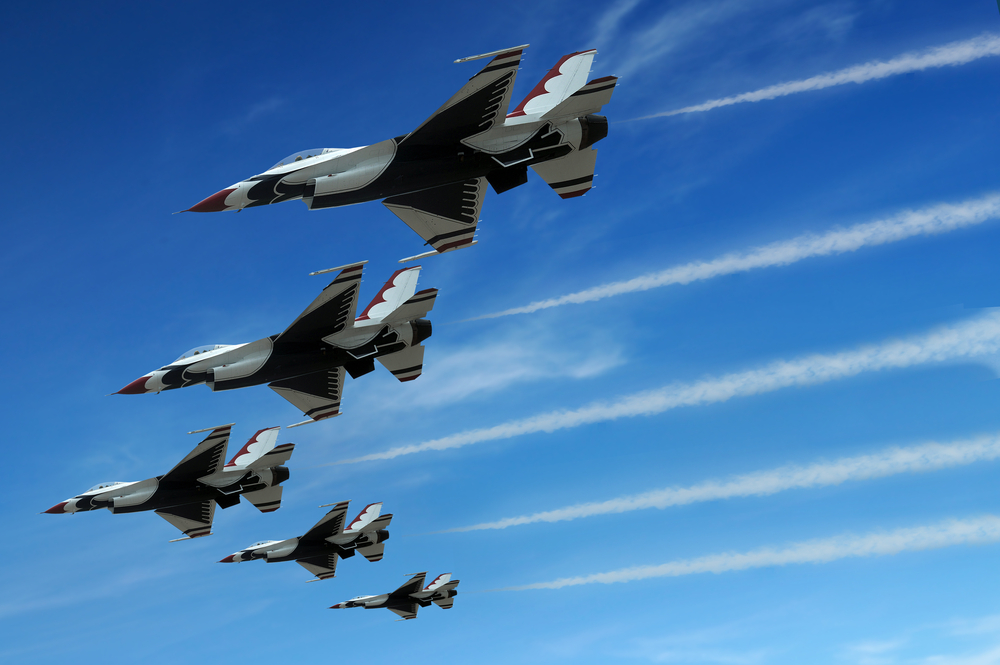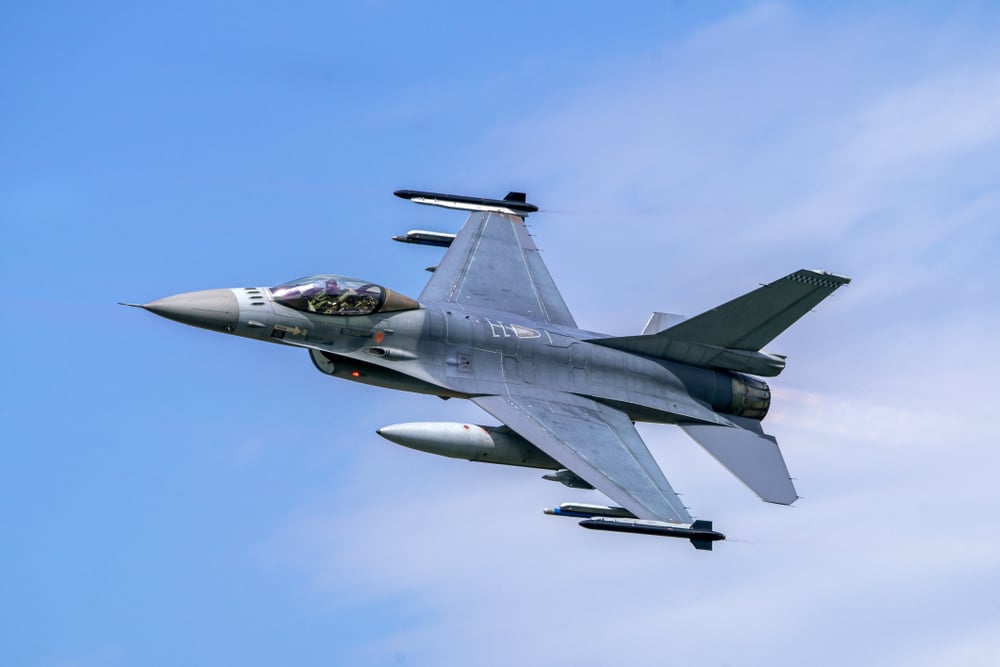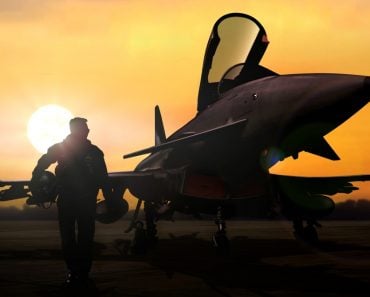Table of Contents (click to expand)
Maverick is a tribute to aviation enthusiasts who love fast aircraft that engage in dogfights. From a purely scientific standpoint, the movie fares well.
Top Gun: Maverick is a Hollywood aviation-based action movie released in 2022. It is the sequel to Top Gun, a similar film based on fighter aircraft released more than three decades ago in 1986.
Top Gun: Maverick (called Maverick throughout this article) is based on the life of the protagonist, Captain Pete “Maverick” Mitchell (played by Tom Cruise). He was an ace fighter pilot back in his day and has been tasked with training a group of young pilots for a deadly, nearly suicidal mission.

At this point, I should mention that this article deals ONLY with the scientific aspects of the film, and that it is riddled with spoilers!
Let’s take a steep dive into this film (no pun intended)…
Recommended Video for you:
All About ‘Mach 10’
Right at the movie’s opening, Maverick flies a stealth aircraft—Darkstar—capable of traveling at hypersonic speeds. The Darkstar aircraft program, however, can only be approved if the plane hits “Mach 10” during its test flight.

Now, a few things about this may not make sense to someone who doesn’t know much aviation jargon.
A lot of attention is put on the plane hitting “Mach 10” in its test flight. Mach numbers, or simply Mach’s, refer to the speed of an aircraft in relation to the speed of sound in that medium.
So, if an aircraft flies at Mach 2, it means that the aircraft flies at twice the local speed of sound. 0.5 Mach, similarly, would be equal to half the local speed of sound.
How To Calculate The Mach Number?
Mach number is the ratio of the speed of an object and the speed of sound. The higher the Mach number, the faster the object is moving.

Aircraft, or any aerial objects, are classified into subsonic, transonic, supersonic, and hypersonic based on how fast they go with respect to the speed of sound.

DARKSTAR: A Hypersonic Jet
In the beginning, Maverick flies a prototype hypersonic (more than five times the speed of sound) aircraft, codenamed DARKSTAR. In the real world, the North American X-15 holds the world record for the fastest human-crewed aircraft ever. On October 3, 1967, this rocket-powered crew set the world record by clocking Mach 6.7 (7274 kilometers per hour) (Source).

So yes, in the non-cinematic world, the fastest any aircraft has ever gone is Mach 6.7. In the movie, the Darkstar aircraft goes beyond Mach 10, but eventually disintegrates. Although no real plane has ever gone that fast, engineers and scientists are currently working on building even faster rocket-powered reconnaissance planes that will be able to outrun any missiles fired at them.
Can You Really Survive Crashing A Plane At Mach 10?
Short answer: no.
In one scene, Maverick flies the Darkstar plane upto the speed of Mach 10.3 and then, the plane disintegrates and explodes into a fireball. The pilot, needless to say, ejects and after a few moments, seen walking into a bar, visibly shaken, but lightly injured.
This part is completely inaccurate from a scientific standpoint.
If a pilot ejects from a plane that’s clocking Mach 10, his body would have the same impact as if it was smashed against a concrete wall. Not only would the person die, but most likely, in a very grisly fashion as their body would be ripped apart by the sheer force of all those air molecules that surround his body.
Fighter Jets Taking Off Of Ships
Aircraft carriers are large ships built for the purpose of launching aircraft off their deck. Typically, aircraft need long runways to attain enough speed to get airborne. An aircraft carrier, however, has a drastically shorter runway compared to land runways; so how do fighter jets take off of such ships?

Fighter jets take off from such short runways on aircraft carriers thanks to a fantastic piece of machinery that essentially ‘flings’ aircraft into the air. You can read more about that technology here: How do aircraft take off from such short runways on ships?
Why Not Fly In F-35s?
This new movie shows the actors flying in F/A-18 Hornet aircraft. However, the US Navy currently has a newer, more powerful fighter jet in their arsenal—the F-35 Lightning II. Why, then, did the movie makers decide NOT to use the more advanced and powerful F-35?

There are a few reasons why they chose the F/A-18 over the F-35. First, the F-35 is a single-seat aircraft, which makes filming an actor inside the cockpit almost impossible.
The F-18 has two seats; in the movie, a professional navy pilot flew the aircraft, while the actor sat in the other seat, pretending to fly it.
Furthermore, the F-35 is not suitable for low-level flights (which the movie centers on); it is specifically designed to fly at high altitudes. (Source)
Lastly, dogfights and aerial combat maneuvers that look so cool on the big screen would not occur with F-35s because those planes are designed to fly high and attack enemy aircraft and ground targets from considerable distances. They are not intended to engage in dogfights where extreme maneuverability and offensive capabilities are essential for survival.
Can A Bird Strike Crash An Aircraft?
In one of the scenes, one of the F-18s is struck by a bird and then crashes… but can a bird strike crash an airplane?
Most definitely it can!
One famous incident involving a bird strike has inspired another Hollywood movie, Sully, which is based on the story of a pilot who landed a bird-struck commercial plane on the Hudson River in 2009 without any casualties.
However, incidents of bird strikes resulting in crashes are sporadic. Even after a bird hits a plane, there are certain safety measures that the pilot can employ to land the aircraft safely.
Thus, the bird crash scene shown in Maverick is scientifically accurate, but quite uncommon in real life.
g-LOC: Can A Pilot Fall Unconscious While Flying A Fighter Aircraft?
Absolutely! The movie has a scene where one of the pilots loses consciousness because of the tremendous pressure of the high g-forces acting on him in the aircraft.
Unfortunately, this is a very realistic part of the movie!

Sitting in your chair, reading this article, you are currently at 1g, i.e., you are being pulled towards Earth normally, so you don’t feel anything out of the ordinary.
However, when you sit on a roller coaster, you may be able to experience 2 Gs, 3 Gs, or sometimes even more than 5 Gs! This would mean that you would feel 5 times the force of gravity, making you dizzy, and possibly nauseous.
Fighter pilots regularly experience 7-10 Gs while doing extreme combat maneuvers (like those shown in the movie). Sometimes, when a pilot experiences more than 10 Gs (or even less, for that matter), they may lose consciousness in the cockpit. This is called G-force-induced loss of consciousness or g-LOC, for short.
Some military planes, like the F-16, are infamous for inducing g-LOC in some pilots.

To counter g-LOC, pilots wear special G-suits to prevent blacking out in the cockpit while flying. Check out this page to learn more about how G-suits work to help pilots endure more than 10 Gs.

Final Verdict
Top Gun: Maverick is a scientifically accurate movie, for the most part. Granted that safe pilot ejection at Mach 10 is impossible, and the combat maneuvers shown in the film are a little too much to believe (in some places), but they can occur in real life and cannot be labeled unrealistic from a scientific point of view.
Bird strikes, g-LOC, the use of F-18s over F-35s, and the super-fast aircraft make it a truly fantastic aviation film, and I highly recommend watching it, whether you have a need for speed or not!
References (click to expand)
- Mach Number - NASA. The National Aeronautics and Space Administration
- NASA - F-18 Performance / Specifications. The National Aeronautics and Space Administration
- F-35 Joint Strike Fighter (JSF) Program - CRS Reports. The Congressional Research Service
- SN Karn. A CHARACTERIZATION OF THE EFFECTS OF THE ANTI- .... The Ohio Library and Information Network













